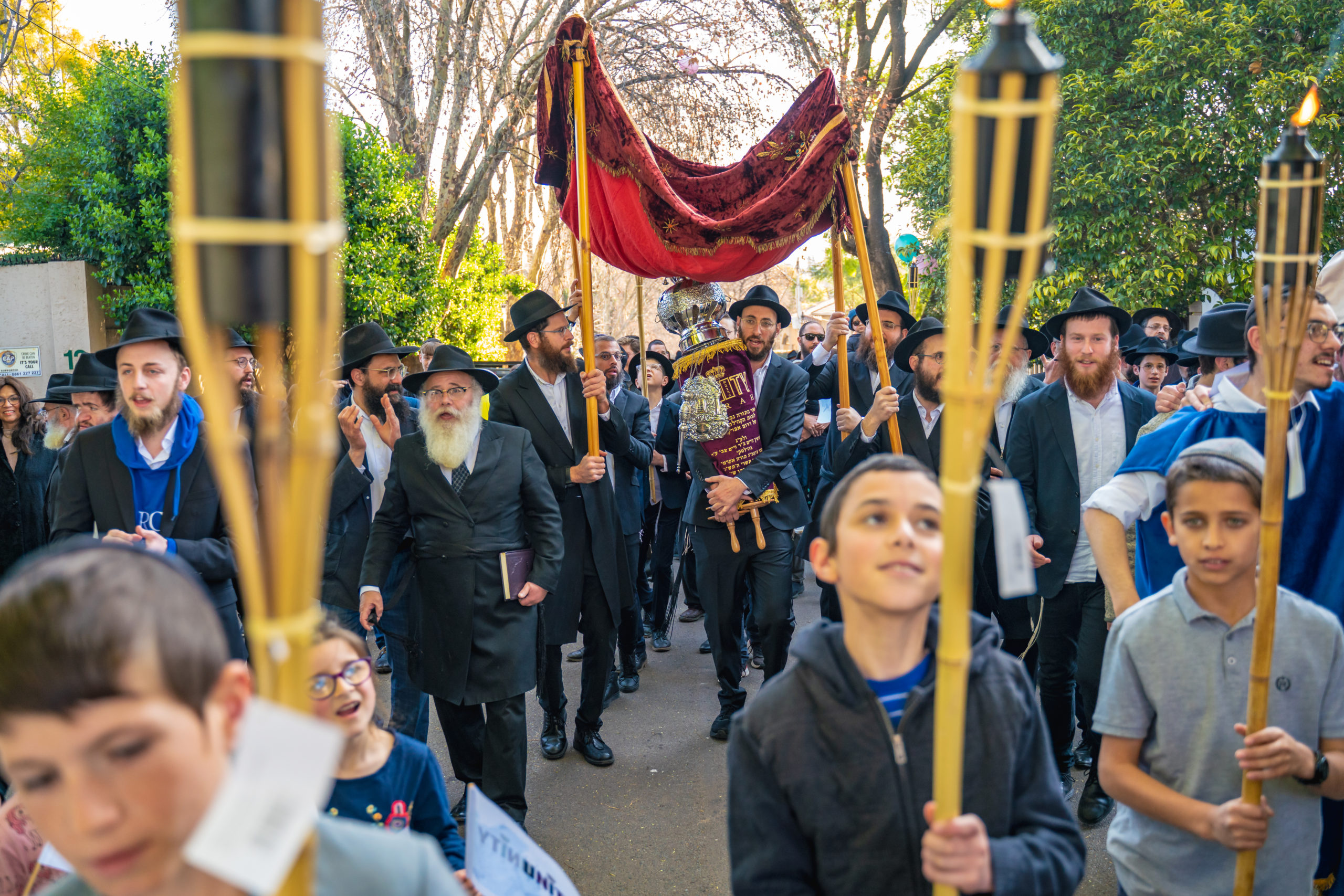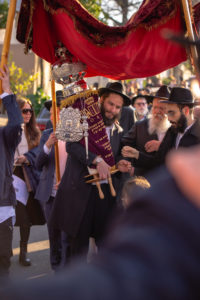click to dowload our latest edition
CLICK HERE TO SUBSCRIBE TO OUR NEWSLETTER


Published
2 years agoon
Hundreds of local Jews, rabbis and communal organisation sang and danced down Oaklands Road in Orchards, Johannesburg last Sunday, 10 July, after completing the South African Unity Torah, a first of its kind in the country.
Never before have organisations got together to create a sefer Torah that represents them all. Jewish people, young and old, from all sorts of organisations came together for the grand procession and presentation of the Unity Torah to the Oaklands community. Live music accompanied the procession, a culmination of a three-year scribing process.
“This Torah is different to any other Torah that has been written in the history of South Africa in the sense that it celebrates everyone in the community and many organisations,” says Ari Arenstein, part of the group of three who came up with the idea of creating a Unity Torah in South Africa. He was also part of the board that brought it to fruition.
Born at the beginning of the COVID-19 pandemic, the idea “sparked an unbelievable vision, which ended up much bigger than we ever imagined”, Arenstein says.
The idea stems from 18th-century mystic, Rabbi Israel Baal Shem Tov, the founder of the Chassidic movement. “He wrote of a pandemic in their town of Medzhybizh in Ukraine, and if people in the community even just started writing letters of a sefer Torah, the pandemic would stop, people would stop dying,” says Arenstein. “So, they immediately got together and started writing a sefer Torah.
“This was known for hundreds of years, so when the pandemic started around the world about three years ago, seven or eight Torahs were written in New York. The catalyst in South Africa was when Rabbi [Mendel] Liberow became one of the first in South Africa to get COVID-19. It was a case of touch and go – more ‘go’ than anything else. He had little chance of survival, and was taken to a specialised hospital in Pretoria.
“It was a massive shock, not just to our community, but globally. People were saying tehillim and doing all sorts of things. Then one morning, three friends of ours were on Zoom, and we said to each other, ‘What can we do to help the situation?’ One of the guys suggested that we try to write a Torah for the rabbi’s recovery. We called his son to ask for permission and to see what he thought of it. He was really touched. [The idea] started getting wings and became much broader. Our committee grew bigger.”
Arenstein and fellow board members started working to organise the project and raise funds. Community organisations joined in – such as Hatzolah, the Chevra Kadisha, the Community Security Organisation, the Union of Orthodox Synagogues, the Office of the Chief Rabbi and Jewish schools.

“It became the South African Unity Torah,” says Arenstein. “Its biggest successes were, first, that it broadened from being a Unity Torah to raising funds for those in need during COVID-19. We partnered with an organisation that helps people who can’t afford the basics. We ended up raising half a million rand for them. Second was getting the letters for the Torah. We got letters from more than 5 000 Jewish children across schools throughout South Africa. Each got a name in the Torah.”
There has never been a project like this in South Africa before, says Arenstein. “Fittingly, today, Rabbi Liberow is healthy and functional. The event on Sunday was also fitting because the Torah is being brought into the community at a time when the levels of COVID-19 restrictions have really eased from three years ago. But the most unique thing about it is the unity. At the event on Sunday, rabbis came from all the shuls in South Africa. People danced around with other sefer Torahs.”
When the idea was born in 2022, Arenstein and fellow board members were inundated with letters on their website. “People were panicking,” he recalls. “Organisations took it on for the sense of unity it was going to bring, the salvation it would bring.”
Arenstein says he and fellow board members witnessed “amazing salvations”. “Whole parshas and large amounts were donated to the project by people who might have had a relative who was seriously ill from COVID-19. In many cases, the patients ended up healed.”
The Unity Torah, with its maroon-coloured mantle, is now going to be used on a weekly basis at the Torah Academy Shul in Orchards, Johannesburg. “But any rabbi, shul, or organisation that needs a Torah will be able to borrow the Unity Torah,” says Arenstein.
